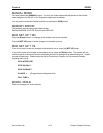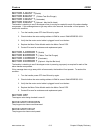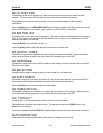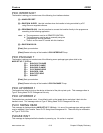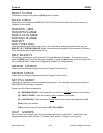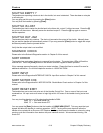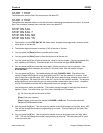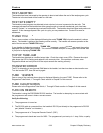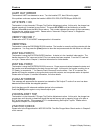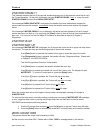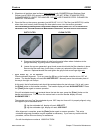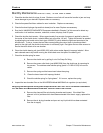
Exatron 3000B
www.exatron.com 6-20 Chapter 6 Display Dictionary
START 1 TEST
The handler has issued a Start Test command to the tester/PC.
START 2 TEST
The handler has detected a failure on the first test and is attempting to double-test the device. A second
Start Test command, possibly more, has been sent to the tester/PC.
STOP ON FAIL
STOP ON FAIL ?
STOP ON FAIL NO
STOP ON FAIL YS
1. The handler is in the
STOP ON FAIL YS
mode, that is, stopped with plunger down, contacts closed,
and a device in the test site.
2. The handler stopped because it received a "fail" at the end of the test.
3. You may press the
[Enter]
button to proceed past the stop.
4. You may press the
[Clear]
button to flush the device out of the test site.
5. You may press the
[1]
key to pick up the device, reseat it and test it again. If the device passes this
time, operation will continue. If the device fails, then the handler will again
STOP ON FAIL
.
6. You may press the
[2]
key to test the device again, without removing it from the contacts. If the
device passes this time, operation will continue. If the device fails, then the handler will again
STOP ON FAIL
.
7. You may press the
[3]
key. The handler display will read,
PLUNGE = 0640
. This refers to the
number of steps the plunger will move when placing the DUT into the handler's PI contacts. Each
step of the motor is approximately .003". 0640 is the factory default setting, although the number of
steps is adjustable. Be careful not to drive the DUT too far into the handler's contacts. The device's
leads probably will not be bent, but you will cause handler contact/device jams to occur. In addition,
the life of the handler's contacts will be decreased if too much plunge is used.
Use the keypad to make your selection. The handler accepts changes to each digit from lowest to
highest, in order. First enterOnes, then Tens, then Hundreds, then Thousands.
[-]
The minus key will set the count to 0000.
[Enter]
Sets your selection.
[Clear]
Resets to the top of the handler's
PLUNGE = 0640
loop. This will also reload the
handler's EPROM default values.
8. You may press the
[4]
key. This will cause the handler to move the plunger up one step, about .003".
This will also change the handler's plunge setting by one step. This new setting will be used in the
next cycle also.
9. You may press the
[6]
key. This will cause the handler to move the plunger down one step, about
.003". This will also change the handler's plunge setting by one step. This new setting will be used
in the next cycle also.



